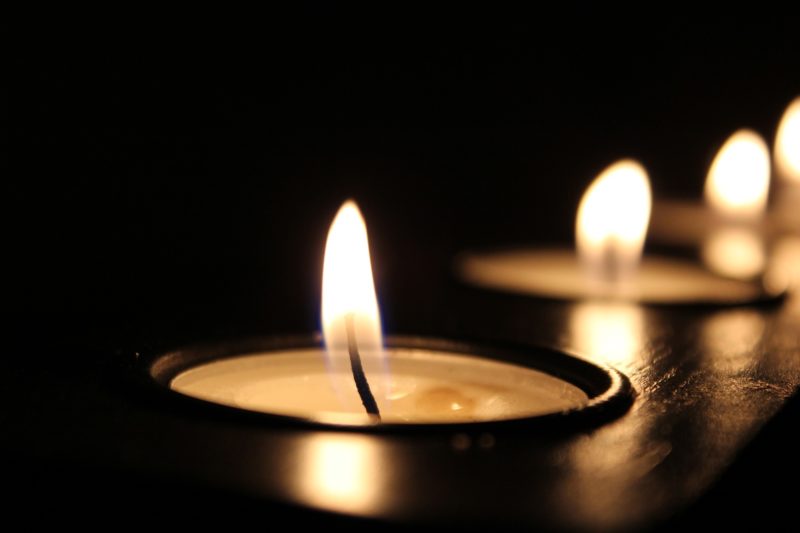One thing about candles that people rarely think about is the wick. Yet, as simple as it may look, there are many things to know about candlewicks. That is why we will tackle queries like what to use for candle wick and many more!

Candlewick
A candle wick is a braided cotton strand that holds the flame of an oil lamp or candle. A candlewick operates by capillary action to provide fuel to the flame “wicking.” When the liquid fuel, usually melted candle wax, reaches the flame, it vaporizes and burns.
What To Use For Candle Wick?
Wicks may be made from everyday household materials. If you’re looking for a wick substitute, here are a few popular possibilities. So, what to use for candle wick?
Toothpicks
Toothpicks, chopsticks, and even popsicle sticks are all made of wood and serve as wicks if lit. However, toothpicks are usually far too short if you’re making a tall candle, such as a pillar or container. These work better as a wick substitute, such as when your candle is buried in wax.
You’ll need something longer, like chopsticks, if you’re making a pillar or container candle. In addition, a metal bottom will be required to hold your makeshift wooden candle. Finally, remember that the container or mold for your candle must be taller than the wooden wick you’re using.
Paper
What to use for candle wick? Paper, of course! A wick might be made from any sort of paper. It includes standard copy paper, notebook paper, construction paper, cardstock, a paper towel, or toilet paper. Before lighting the paper, soak it in borax and melted wax to harden it and allow it to dry.
Yarn, cotton string, or twine
Yarn might be used as a wick if it was hardened with something like borax. It would also be nice if the yarn were free of color and bleach. As a result, I’m assuming that any colored yarn would not work.
But you should check the box to see whether it includes any dyes or bleach. For example, a cotton string would be preferable over yarn. It will require a stiffener, such as borax, and should be wax-coated before usage.
Strips of cotton
Could cotton swatches from an old shirt or socks be used as a candle wick? You can construct your candle using cotton strips from an old shirt as an “emergency” wick. However, it might probably work because you are essentially using cotton.
An old mop’s strand
It is essentially braided cotton; thus, you might use an old cotton thread from a mop. Cotton string, rope, or anything else that you can form into a wick will suffice. It must only be cotton and not polyester.
You Can Make Your Own Wicks!
I’ll guide you through two ways of making wicks. The first approach I’m going to attempt is a borax solution. The second alternative is to repurpose the wick trimmings from an old candle that you produced yourself.
I’ll start with the borax method and then use your old wick trimmings. The most common DIY way for making wicks at home is to use a borax solution. However, this method is not the quickest because it takes many days to finish.
Suppose you need to construct a candle but don’t have a wick rapidly. Don’t anticipate being able to produce and finish your wick for your candle project quickly. The best material for your wick is 100 percent cotton twine, but any braided string will do.
You will use the wax to coat the rope or twine. The candle is supposed to burn consistently yet slowly. As a result, selecting the proper wick material is crucial.
Furthermore, the borax solution assists in the reduction of the burn rate. To aid in the burning process, you will cover the string with molten wax. Water, salt, and boric acid will be combined to create our wick solution or borax.
Begin by mixing the water, salt, and borax. You should then immerse the twine in the borax solution for 24 hours. The next day, you’ll need a place to hang the string.
You should hang it outside or in a place without sofas or beds. The string must be hung and allowed to dry for up to 48 hours. After that, you should place something beneath the rope to catch the droppings as they dry.
After the string has been cured for 48 hours, it is coated with molten wax. Allow it to heal for a few minutes after that. You can repeat this method several times to achieve a thick layer of wax, but one application should be plenty.
The more wax coats on the wick, however, the better the candle will burn. It is the previously described priming approach. Regardless matter how many times the string is dipped in wax, the completed wick should be solid and erect.
It aids in the correct lighting of the candle. A wick that burns too rapidly may cause the candle to burn out before it has formed a full wax pool. It causes the candle to burn or melt unevenly, resulting in a candle that lacks a wick.
Conclusion
So, what to use for candle wick? These are very useful in an emergency or any DIY project. Have fun playing with these wick substitutes so you can enjoy your new candles while reading a book on your bed.
